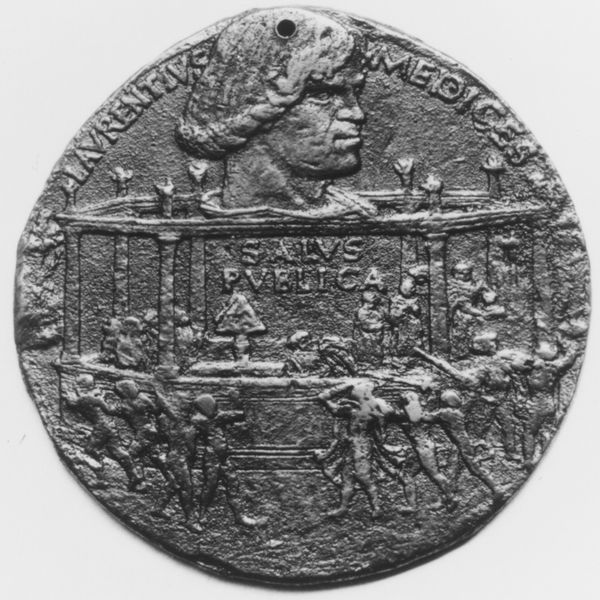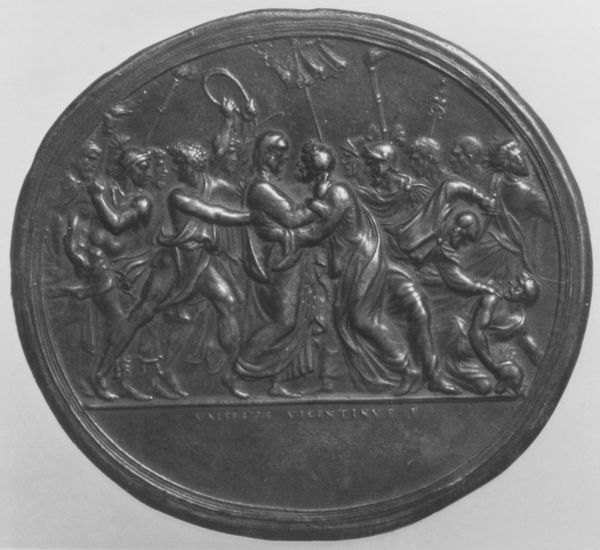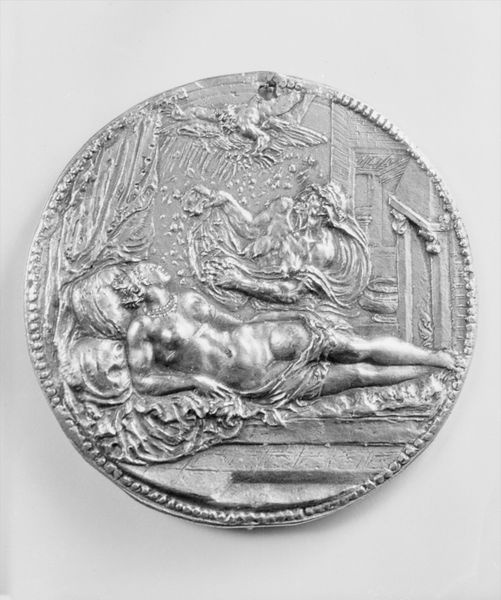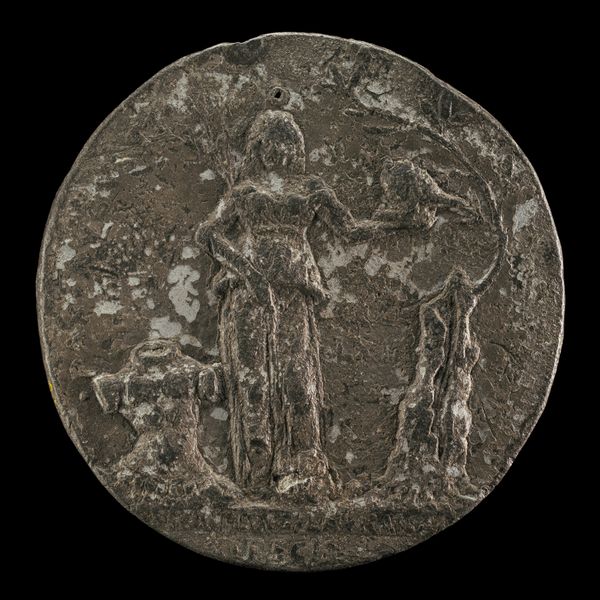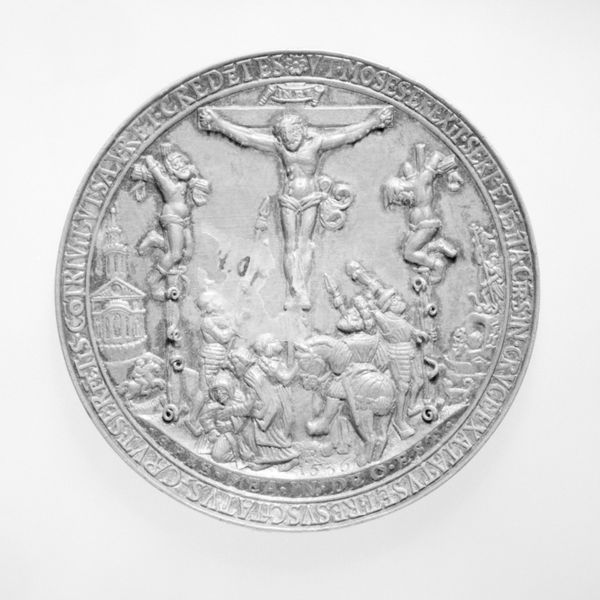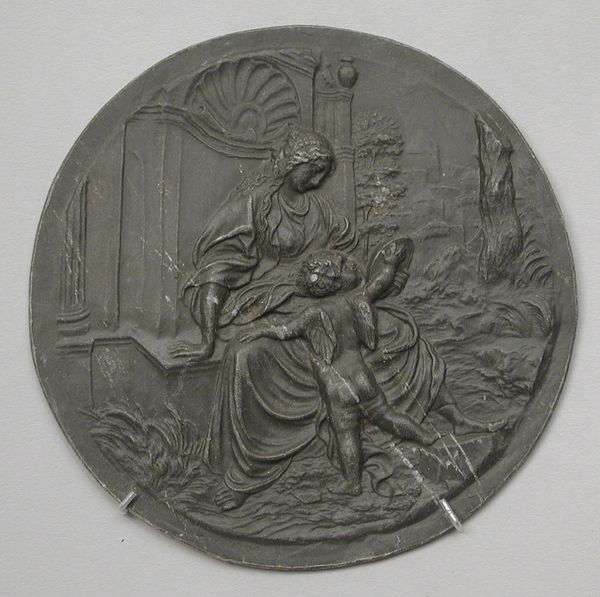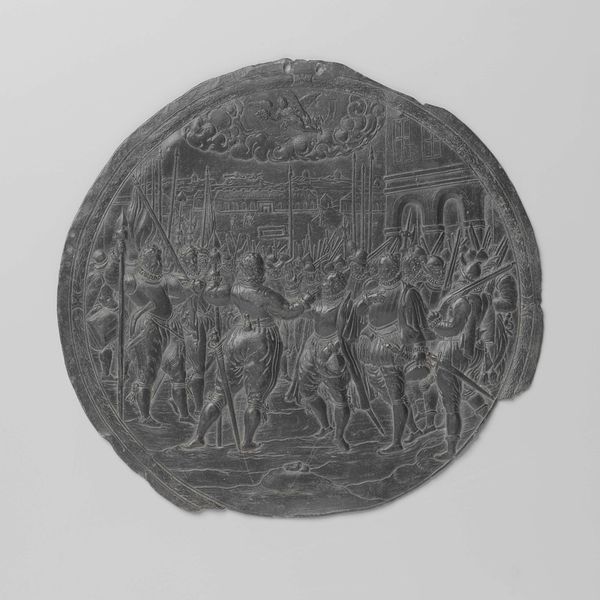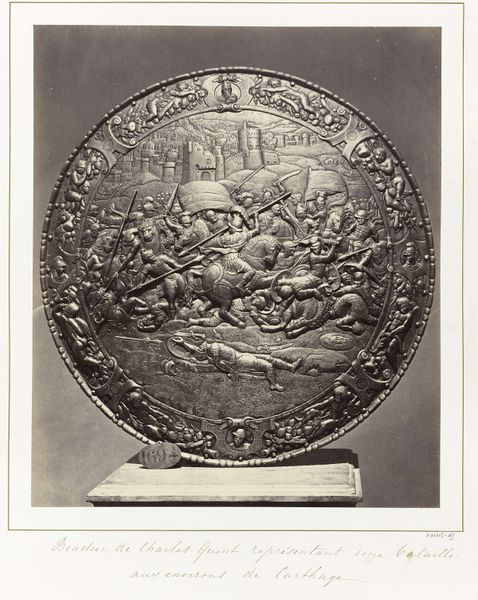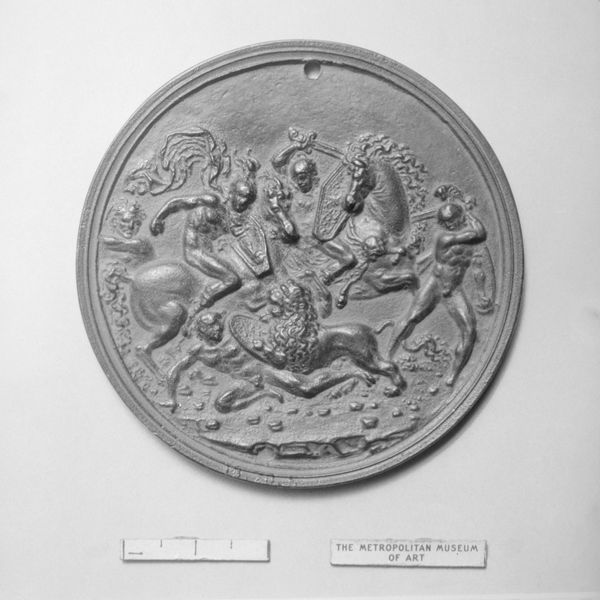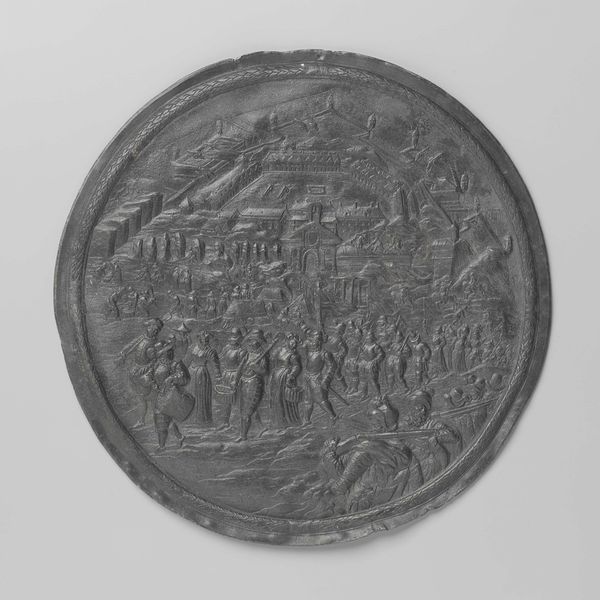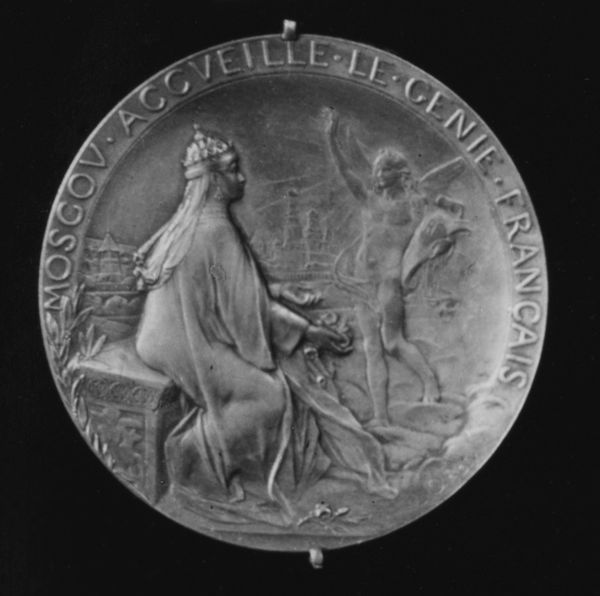
carving, relief, sculpture
#
portrait
#
carving
#
sculpture
#
relief
#
landscape
#
11_renaissance
#
sculpture
#
history-painting
#
decorative-art
#
italian-renaissance
Dimensions: Diam. 5 3/4 in. (14.6 cm.)
Copyright: Public Domain
Peter Flötner created this small circular plaquette in Nuremberg, Germany, sometime in the first half of the sixteenth century. It’s made of lead. The scene shows figures from Homer’s "Iliad," the goddess of delusion, Ate, and the Prayers, the Litai. Ate has convinced Agamemnon to violate the rules of war by stealing Achilles’ war prize. The image invites us to contemplate the consequences of flawed judgment. In the hierarchical society of the Renaissance, such classical imagery served a didactic purpose. Knowledge of such stories marked one as educated, while the stories themselves modeled both good and bad behavior. As historians, we can look at prints and drawings of the period to understand how classical mythology was understood in 16th-century Germany. It is through such detailed study that we can begin to understand the place of art in the social life of the past.
Comments
No comments
Be the first to comment and join the conversation on the ultimate creative platform.
